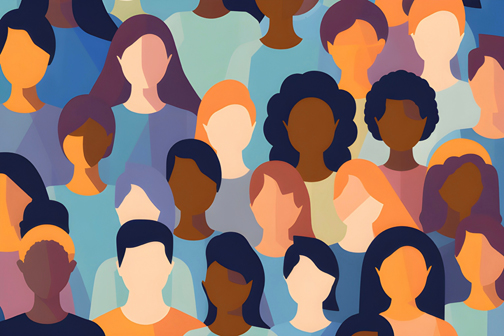
To create an inclusive work environment, it’s important to talk with your team about different types of microaggressions, their effects, and how to prevent them.
Assumptions, insensitive comments, inappropriate questions, putdowns: Whether intentional or not, these kinds of interactions, known as “microaggressions,” can make people feel uncomfortable, uneasy, unsettled, undervalued, and unwelcome.
Microaggressions can be as subtle as remarks like, “Wow! You look too young to be working here!” or “I wouldn’t have guessed you were interested in pursuing a leadership role since you have two small children at home.” It could also be an action like continuously mispronouncing or shortening someone’s first name without permission because you’re struggling to say it correctly.
If you want to make sure that all employees are treated well, then it’s important to address microaggressions in the workplace to boost morale, keep productivity up, and ensure a psychologically safe environment.
The best place to start? With education. Helping employees understand what microaggressions are, and whether their words or actions may be unintentionally causing harm, can go a long way toward making everyone feel more valued and accepted. It can also help people realize how they may come across to other team members.
Understanding What Microaggressions Are
Training should start by helping your team understand the different types of microaggressions that exist, including:
- Verbal: comments, jokes, or remarks about someone’s race, gender, health, parental status, socioeconomic background, religion, etc.
- Nonverbal: gestures, body language, or expressions that convey bias (rolling your eyes or looking down when someone speaks)
- Environmental: lack of diversity in décor, not providing accommodations for those with disabilities, etc.
Because acts of microaggression are often unintentional, many people don’t realize that their remarks may be coming from a place of societal conditioning or from an embedded bias they don’t realize exists.
Understanding How Microaggressions Hurt
Once employees realize what a microaggression is, then it’s time to teach them about the effect of microaggressions in the workplace, such as:
- Psychological: impacts on self-esteem, feelings of loneliness or isolation, or feelings of stress, anxiety, or depression
- Professional: impacts on career advancement, job satisfaction, or productivity and engagement
- Physical health: impacts on blood pressure or cardiovascular issues, etc.
Addressing & Preventing Microaggressions in the Workplace
As you work with your employees to help them understand what microaggressions are, and the impact they can have, you can also take steps toward preventing and addressing them in your workplace.
This can be done through things like:
Creating Clear Policies & Reporting Mechanisms
Establish clear anti-discrimination policies and procedures that let employees know how to report incidents when they occur. As part of these policies, it’s critical to make sure that people feel safe and protected in reporting possible microaggressions without worrying about pushback or punishment.
Providing Training on Bias Interruption
Help employees understand when and how to intervene if they witness microaggressions occurring on the job—as well as how they can support the person who’s affected by the incident.
Promoting Feedback and Evaluation
Encourage an environment of open communication. To benchmark experiences and track improvement, regularly solicit feedback from employees about what’s happening at work. Then, use that information to make changes or adjust training and education appropriately.
Offering Supportive Resources
Make sure employees have access to whatever resources they may need in order to deal with the effects of microaggressions, like counseling and employee assistance programs.
Encouraging Inclusivity from Day One
Diversity, equity, and inclusivity (DEI) training should be integrated into your onboarding process so that new employees understand your company’s commitment to an inclusive workplace from the very start.
Your Partner in Creating Inclusive Workplaces
If you want to create a more inclusive and equitable environment, then addressing and preventing microaggressions in the workplace is essential.
Everyone should feel heard, valued, and included at work. That’s why NSCA and livingHR work together: to help NSCA members find ways to further humanity while also furthering their business objectives. People wins will always power business wins.
This article was developed for NSCA in partnership with Wendy Feeling, director of human resources at Visual Sound, and Daniel Duckworth, VP of DEIB people + culture at livingHR. Both are members of the NSCA DEI Action Council.







